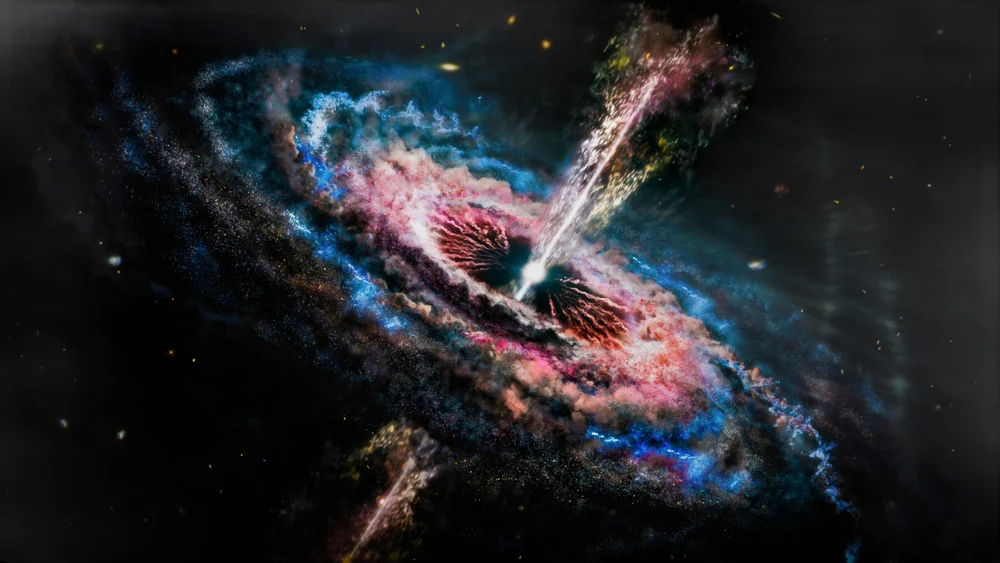The Universe is a vast expanse that contains countless wonders, but which some of the greatest minds in physics, even today, still do not understand its secrets. Dark matter and dark energy represent two of the most bewildering enigmas.
These invisible forces account for an overwhelming 95% by mass of the universe's total mass-energy content. Ordinary matter and energy comprise just 5%, as we have come to know.
When we look into the progress that physics has made toward grasping these mysterious things, it becomes clear that many advances have been achieved. The mystery of dark matter and dark energy, however, are every bit as curious and still out of our reach as they once were.
Let's Explore 50 Shocking Facts About Dark Matter and Dark Energy
Around 27% of the cosmos is made up of dark matter.
Since it doesn't emit, absorb, or reflect light, electromagnetic radiation cannot detect it, rendering it invisible.
Drawing upon measurements of galaxy clusters, Fritz Zwicky postulated the presence of dark matter for the first time in 1933.
Galaxies and galaxy clusters' motion can be affected by the interaction between dark matter and gravity.
The particle known as a WIMP (Weakly Interacting Massive Particle) is the most commonly accepted candidate for dark matter.
Also Read: Top 30 Motivational Facts About Jackie Chan
Several studies are looking for evidence of dark matter particles, including the Large Hadron Collider (LHC).
Dark matter is believed to be distributed in a halo around galaxies
It was essential to the creation of cosmic structures such as galaxy clusters and galaxies.
Previously thought to be potential dark matter candidates, MACHOs (Massive Compact Halo Objects) have mostly been ruled out.
The nature of dark matter, which has not been directly seen, is still one of astronomy's greatest mysteries.
Also Read: Top 5 AI Video Editing Tools to Simplify Your Work
Dark energy is the major component of the universe, calculating up to approximately 68% of its total mass.
Dark energy is assumed to be evenly distributed throughout space, in contrast to dark matter, which is believed to concentrate in galaxies or galaxy clusters.
The cosmos is expanding faster than ever thanks to dark energy, which has been found through investigations of far-off supernovae.
The finding of cosmic acceleration in the late 20th century contributed to the rise in popularity of the dark energy theory.
Originally intended to keep the cosmos static, Albert Einstein added the cosmological constant to his calculations. However, as the expansion of the universe was verified, he abandoned this idea.
Also Read: Top 50 Interesting Facts About Earth to Remind You Why It's Amazing
Although its nature is poorly understood, dark energy is frequently referred to as the "repulsive force" that is propelling the expansion.
The cosmological constant, represented by the Greek symbol lambda (λ), is the most widely accepted hypothesis for dark energy.
An alternate idea called quin-essence proposes that dark energy is a dynamic field that changes throughout time.
Important information about dark energy's impact on the cosmic microwave background has been made available by the Planck satellite and the Wilkinson Microwave Anisotropy Probe (WMAP).
One of the main objectives of contemporary cosmology is to comprehend dark energy, which calls for both theoretical and observational work.
Also Read: Top 30 Motivational Facts About Virat Kohli
Dark energy and dark matter affect the cosmos in distinct ways and are not directly related.
Dark energy and dark matter together account for 95% of the universe's entire mass-energy content.
The large-scale structure of the universe is shaped by the interaction between dark matter and dark energy.
Modified Newtonian Dynamics (MOND) is one of the modified theories of gravity that aims to explain known phenomena without mentioning dark matter.
Because visible and dark matter components were separated in the Bullet Cluster, a galaxy cluster collision, compelling evidence for the existence of dark matter was presented.
Also Read: Top 30 Fun And Amazing Facts About Rohit Sharma
The investigation into dark matter and dark energy has greatly impaired man's comprehension of the fundamental forces and particles in the universe.
Probing the distribution of dark matter and characteristics of dark energy are the goals that scientists hope to achieve in experiments such as The Dark Energy Survey (DES).
The enigma is that because dark matter and dark energy are so enigmatic, they are not well-represented in simulations, creating problems for cosmological modeling.
Dark matter densities during early universe times had an impact on the production of abundant elements like helium and deuterium.
With a deeper understanding of the nature of dark matter and dark energy, there could be a unified, all-embracing and superior physics than the Standard Model.
Also Read: Top 30 Interesting Facts About The James Webb Space Telescope
1E 0657-56 or the Bullet Cluster is a well-known instance in which dark matter's existence is evident. The visible matter can be seen distinctly detached from the gravitational mass.
It is thought that dark matter was necessary for the early universe to produce its first galaxies.
Through gravitational lensing - where the light is bent by enormous objects to indicate-invisible mass - the distribution of dark matter indirectly may also be mapped.
The study of dwarf galaxies enables us to obtain an understanding of what dark matter particles are like. The dark matter-to-visible matter ratio in these galaxies is much higher.
The names "hot," "cold," and "warm" dark matter describe the speed at which dark matter particles move and how this affects the formation of cosmic structures.
Also Read: Top 30 Interesting Facts About Cryptographic Mathematics That Will Shocked You
Axions, sterile neutrinos, and other exotic particles outside of the Standard Model of particle physics are some of the suggested dark matter candidates.
Galaxies would not hold together as observed without dark matter, which is necessary for their stability.
The cosmic microwave background radiation may have been impacted by dark matter, which would have left marks on its temperature variations.
According to certain astronomical measurements, dark matter might interact with itself via forces besides gravity.
The goal of the HaloSat mission is to better comprehend dark matter by examining the heated plasma in the Milky Way's halo.
Also Read: Top 30 Unique Surprising About Number 2
Astrophysicist Michael Turner first used the phrase "dark energy" in a 1998 talk announcing the finding of cosmic acceleration.
When dark energy first began to drive the expansion of the universe, Type Ia supernovae were used as "standard candles" to measure distances.
Dark energy research in Chile is greatly aided by the Dark Energy Camera (DECam) at the Cerro Tololo Inter-American Observatory, which surveys the southern sky.
The hypothesis of dark energy suggests an ever-accelerating expansion, challenging conventional wisdom regarding the universe's ultimate fate.
The European Space Agency (ESA) is in charge of the Euclid mission, which surveys the universe's geometry to learn more about dark energy and dark matter.
Also Read: Top 30 Amazing Facts About Number 1
Vacuum energy, or the energy of empty space, is frequently linked to dark energy, which adds to the universe's total energy density.
Modified gravity models and other theories aiming to unify dark matter and dark energy are not able to fully explain all of the known occurrences.
Large areas with low matter density, or cosmic voids, can provide information about how dark energy affects the universe's large-scale structure.
On cosmological scales, dark energy becomes more significant and affects the universe's evolution over billions of years.
Improvements in theoretical physics, including a more thorough explanation of gravity, and observational methods to study the universe at various sizes may be necessary to comprehend the nature of dark energy.
Also Read: Top 30 Sensational Facts About Salvador Dalí
Posted By F A C T O L O G Y
"Factology " is a Fact Blog. Here you can find all kinds of facts and blogging-related content. My name is Mihir Patel and I am a passionate blogger. Blogging has been my creative outlet for several years now, and I love the freedom it gives me to express myself and share my ideas with the world. Through my blog, I write about a wide range of topics that interest me, including technology, science, and space.
Tags: Space Facts


.jpg)
.jpg)

.jpg)
.jpg)

